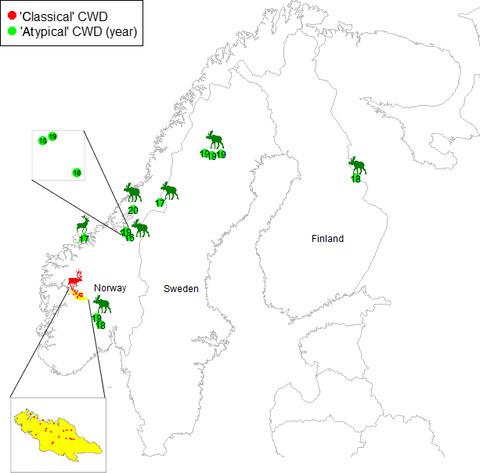当前位置:
X-MOL 学术
›
J. Appl. Ecol.
›
论文详情
Our official English website, www.x-mol.net, welcomes your
feedback! (Note: you will need to create a separate account there.)
Policy implications of an expanded chronic wasting disease universe
Journal of Applied Ecology ( IF 5.0 ) Pub Date : 2020-10-26 , DOI: 10.1111/1365-2664.13783 Atle Mysterud 1 , Sylvie L. Benestad 2 , Christer M. Rolandsen 3 , Jørn Våge 2
中文翻译:

扩大的慢性消耗性疾病范围的政策含义
更新日期:2020-10-26
Journal of Applied Ecology ( IF 5.0 ) Pub Date : 2020-10-26 , DOI: 10.1111/1365-2664.13783 Atle Mysterud 1 , Sylvie L. Benestad 2 , Christer M. Rolandsen 3 , Jørn Våge 2
Affiliation

|
- International policy for the management of wildlife disease(s) plays an important role for concerted action, and changes to policy should be evidence‐based and updated as new evidence accumulates. Management of chronic wasting disease (CWD), the prion disease affecting cervids, is based on its highly contagious nature relative to most other prion diseases. These management actions are particularly invasive, with considerable biological and economic consequences.
- A novel type of CWD has been discovered in moose Alces alces and red deer Cervus elaphus, with prions restricted to the central nervous system (CNS). Prions in tissue outside the CNS are an indication of the contagiousness of a prion disease. As such, for this novel type of CWD, there is a lower likelihood of horizontal transmission under natural conditions. Furthermore, infected individuals were older (mean 15 years), and cases appeared with limited clustering in space and time; hence, with no indication of an epidemic outbreak.
- Policy implications. The annual harvest of approximately 4 million cervids in Europe each year generates considerable cultural and economic value. ‘Stamping out’ policies would be inefficient and inappropriate to control diseases with no horizontal transmission among live animals, and banning the export of meat from a region after detection of a positively tested animal would make little sense in the case of sporadic disease. The novel type of chronic wasting disease (CWD) with epidemiological characteristics clearly different from ‘classical’ and contagious CWD calls for differentiated management strategies to avoid unnecessarily invasive actions.
中文翻译:

扩大的慢性消耗性疾病范围的政策含义
- 管理野生动植物疾病的国际政策在采取一致行动中起着重要作用,对政策的更改应以证据为基础,并随着新证据的积累而更新。慢性萎缩性疾病(CWD)(影响宫颈的病毒疾病)的管理基于相对于大多数其他病毒疾病具有高度传染性。这些管理措施特别具有侵入性,具有相当大的生物学和经济后果。
- 一种新的类型的CWD已经驼鹿被发现驼鹿和马鹿马鹿,具有受限制的中枢神经系统(CNS)朊病毒。中枢神经系统外部组织中的病毒是a病毒疾病传染性的指标。这样,对于这种新型的CWD,在自然条件下水平传输的可能性较小。此外,受感染的个体年龄较大(平均15岁),并且病例在时空上的聚集程度有限;因此,没有流行病爆发的迹象。
- 政策含义。在欧洲,每年约有400万头鹿的年收成产生可观的文化和经济价值。采取“淘汰”政策来控制疾病是无效且不适当的,因为它们不能在活畜之间进行水平传播,而在检测到经过积极检测的动物后,禁止从某个区域出口肉类对于散发疾病而言毫无意义。具有流行病学特征的新型慢性消耗性疾病(CWD)与“经典”和具有传染性的CWD明显不同,因此要求采取不同的管理策略,以避免不必要的侵入性行为。











































 京公网安备 11010802027423号
京公网安备 11010802027423号